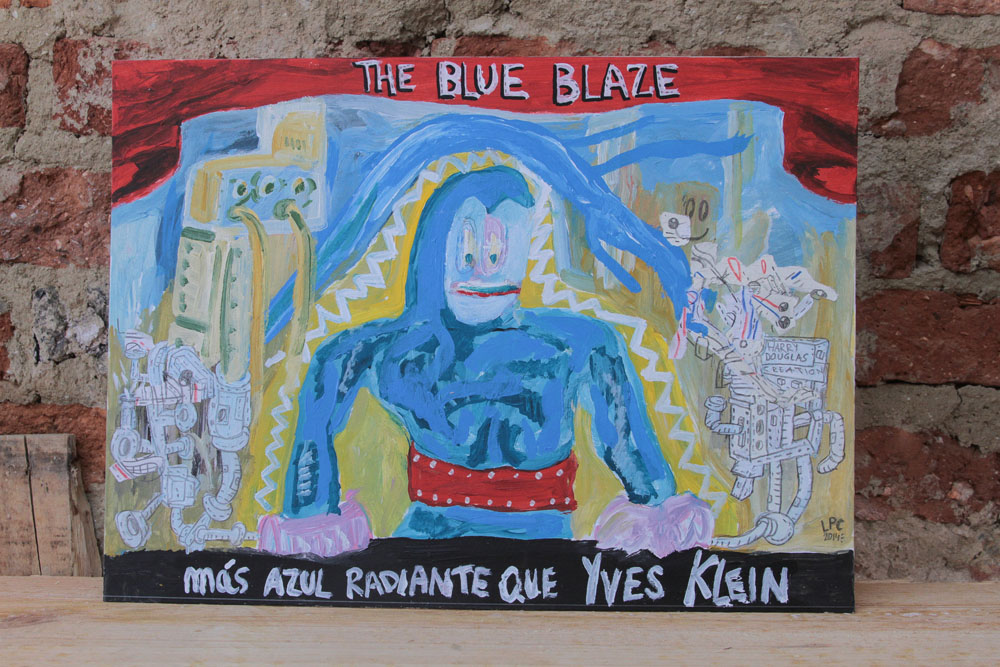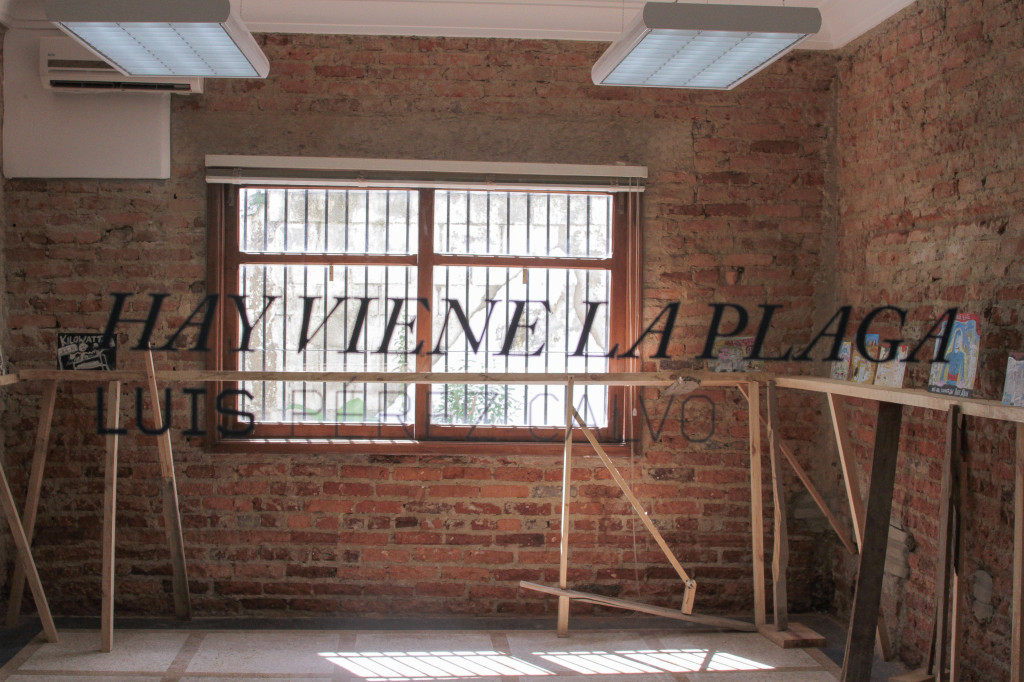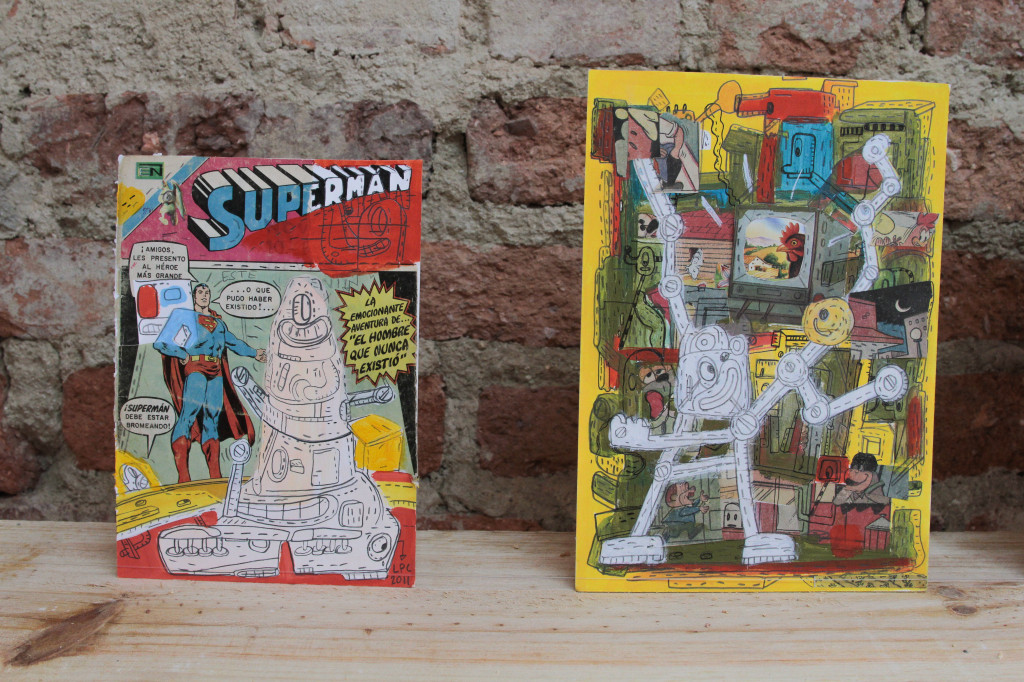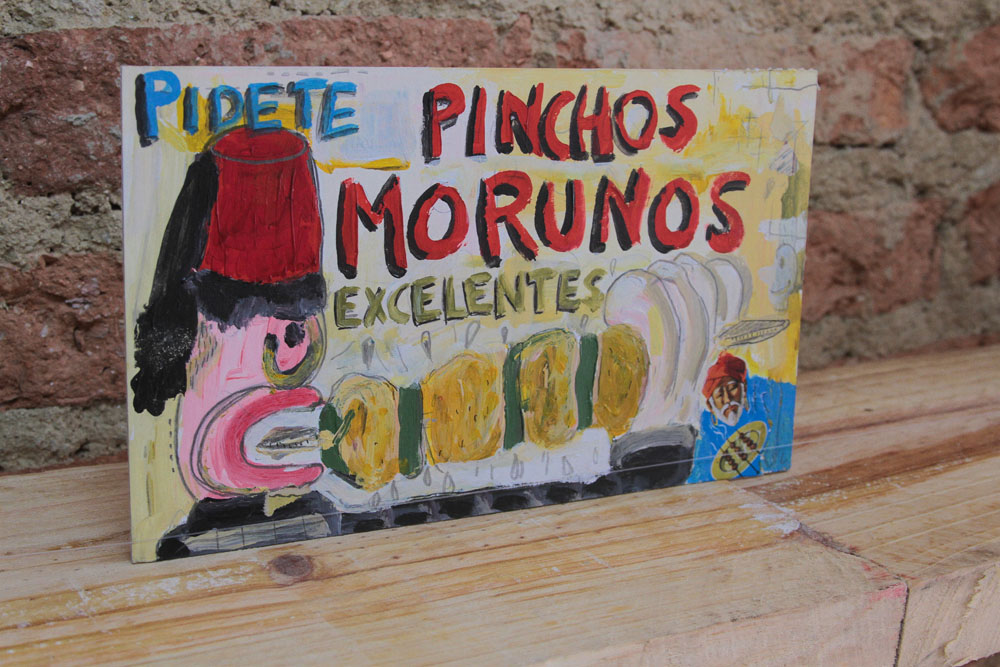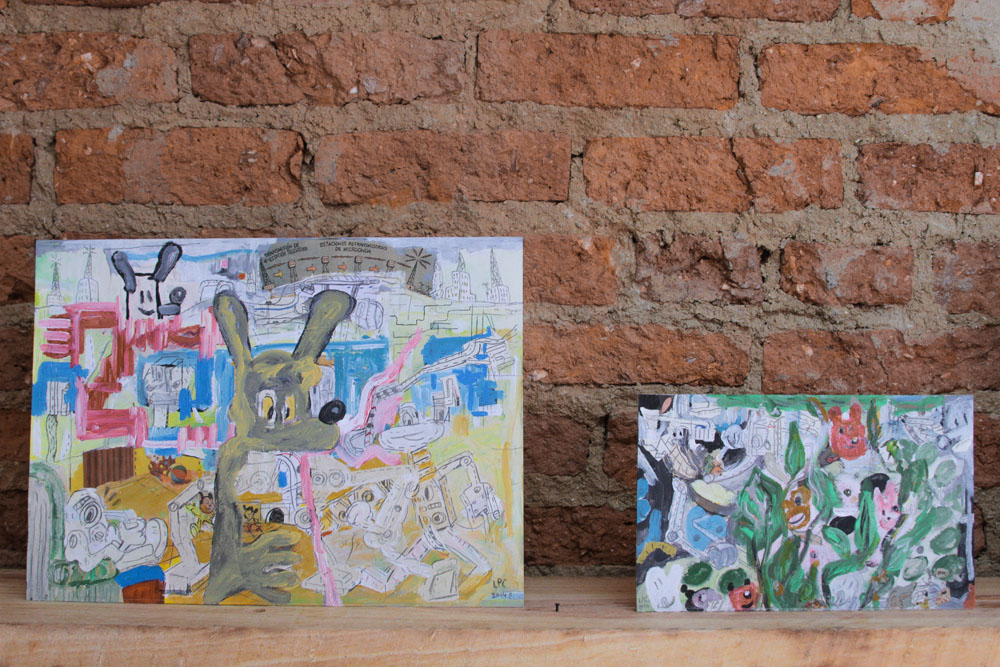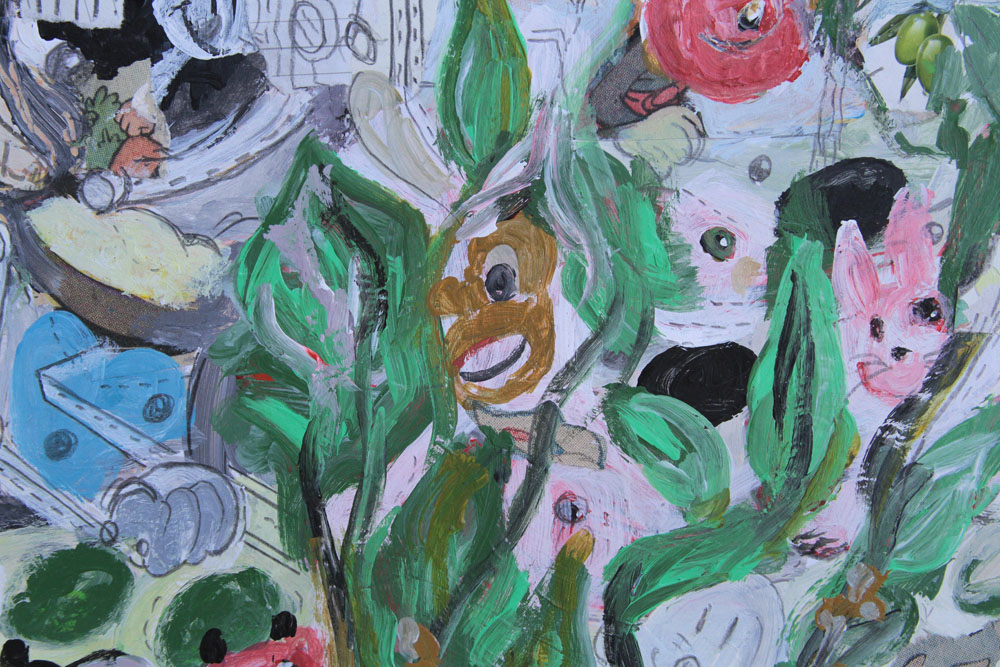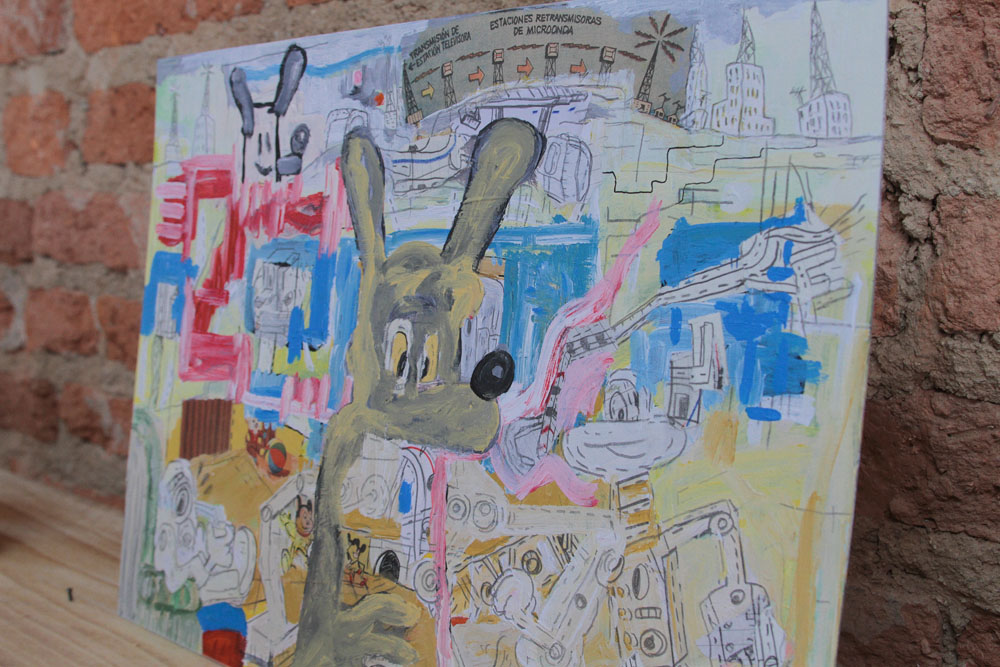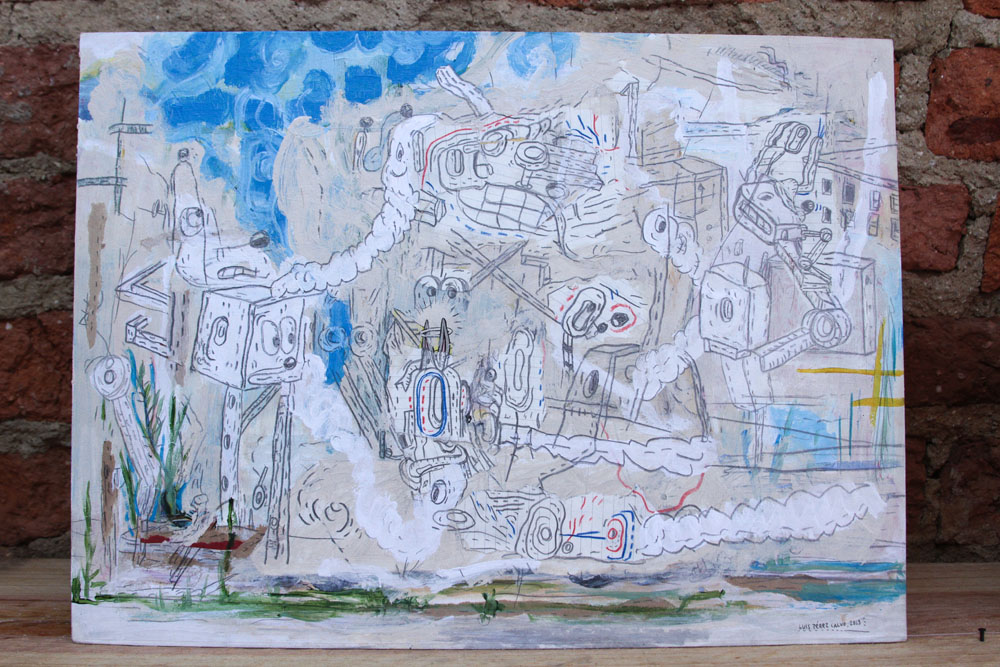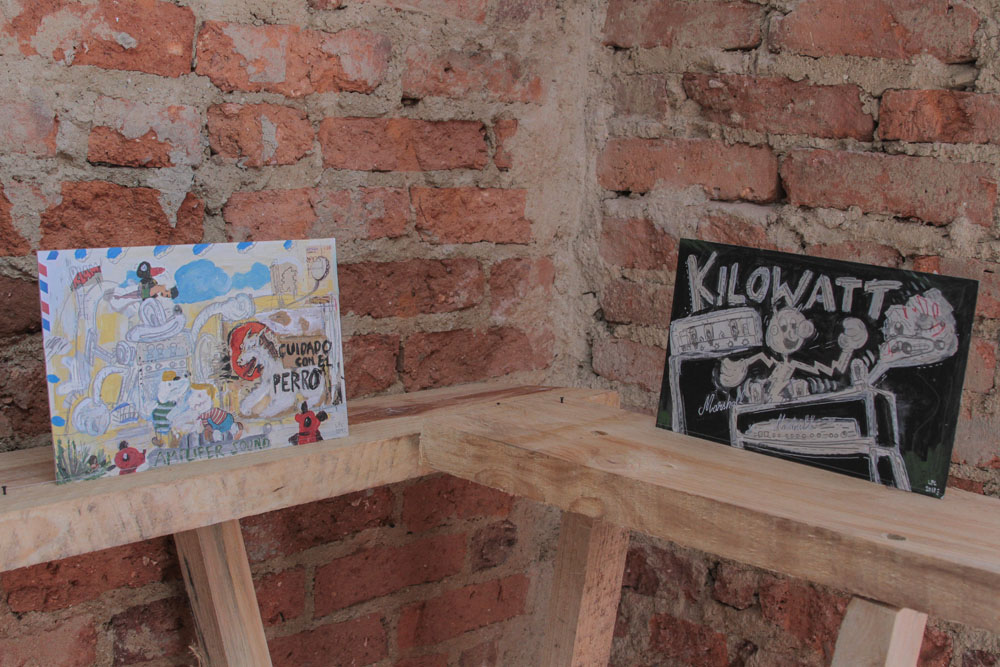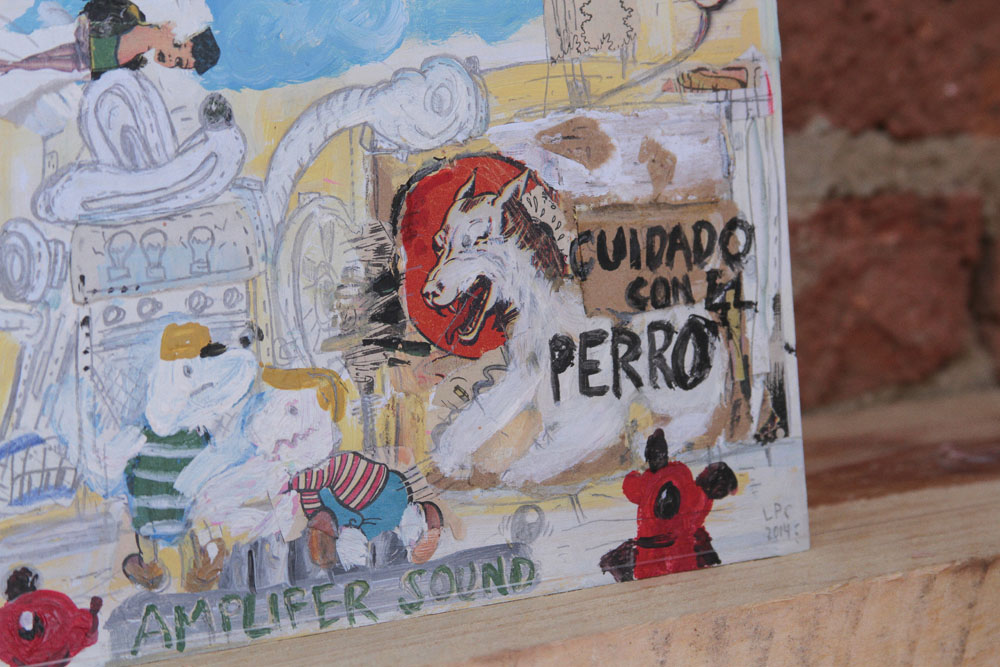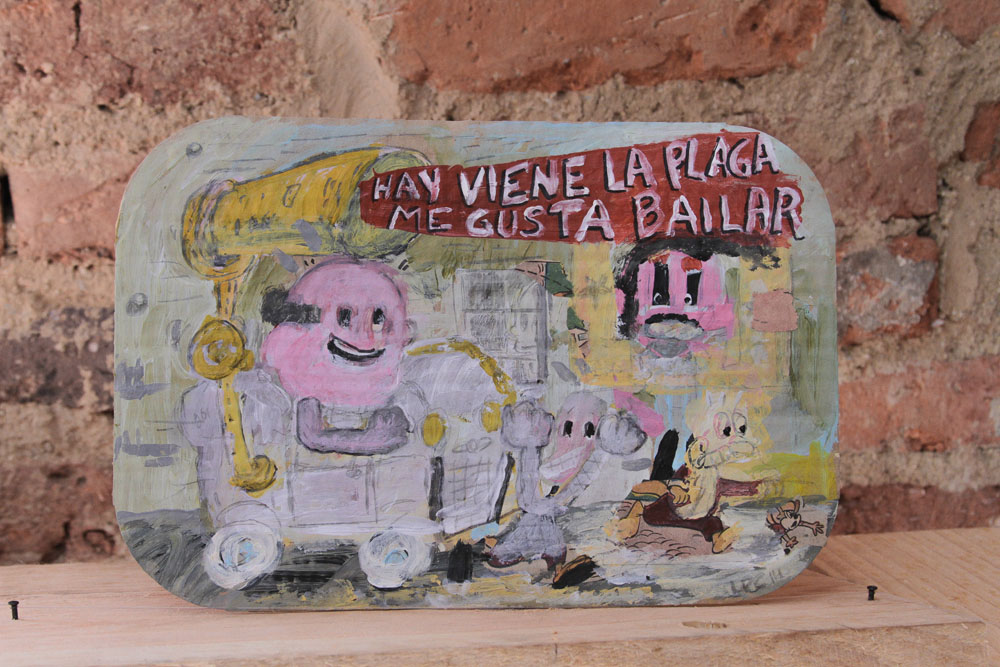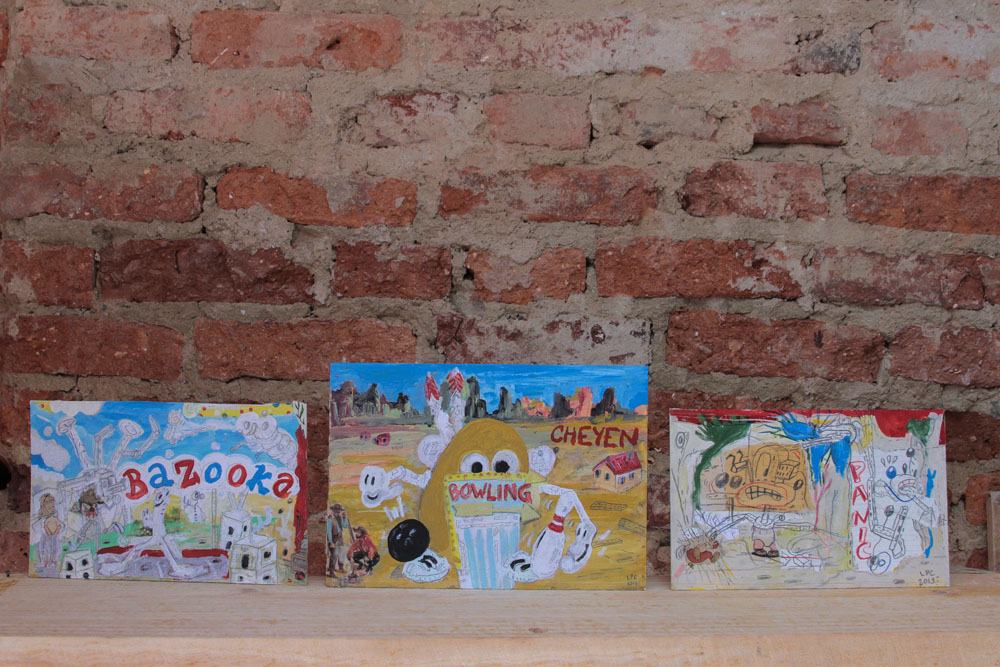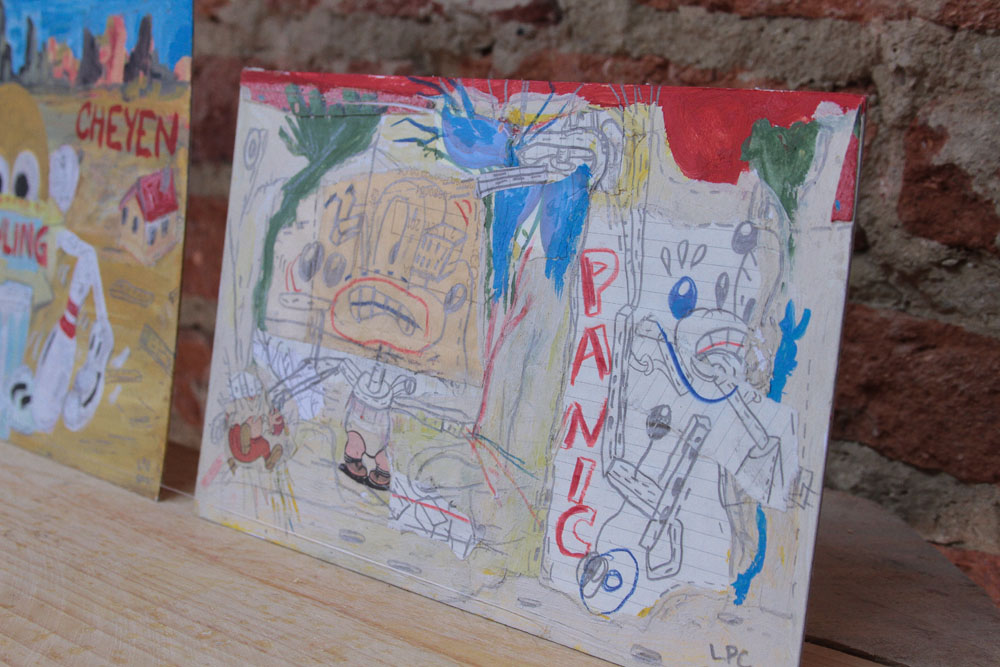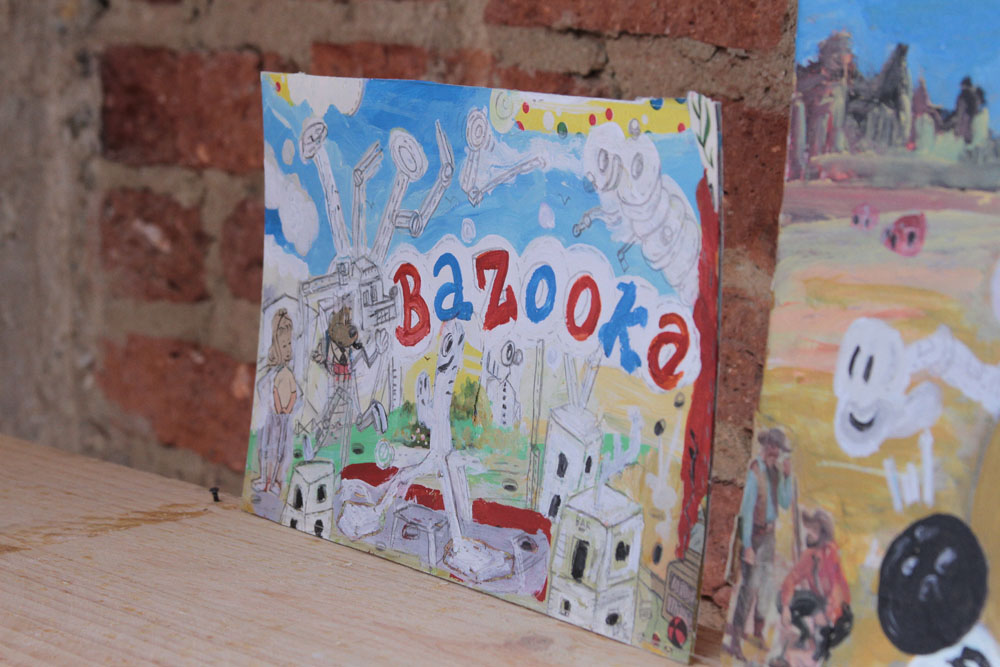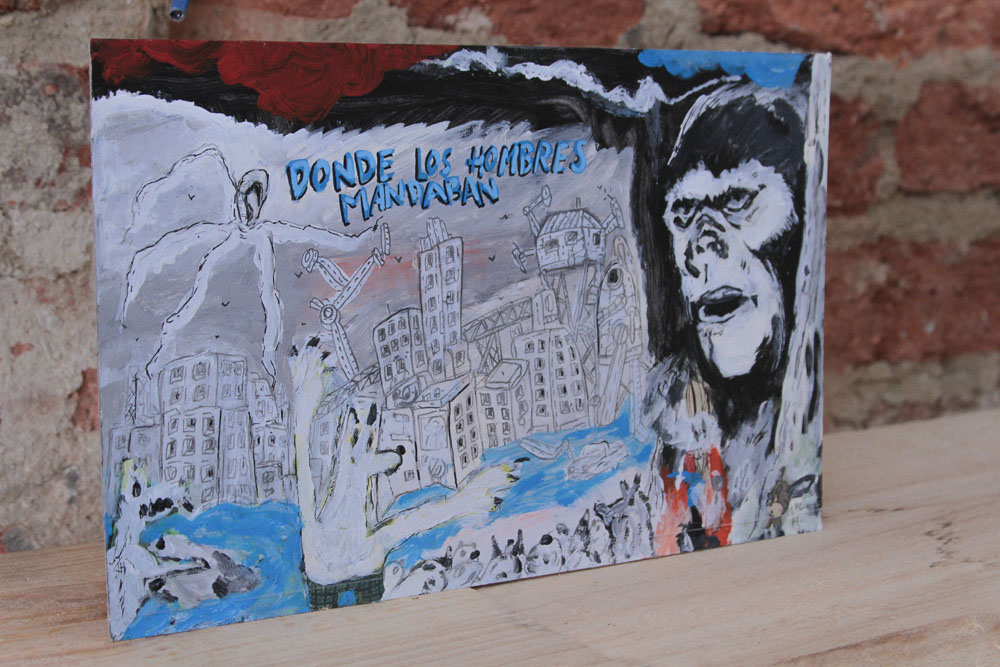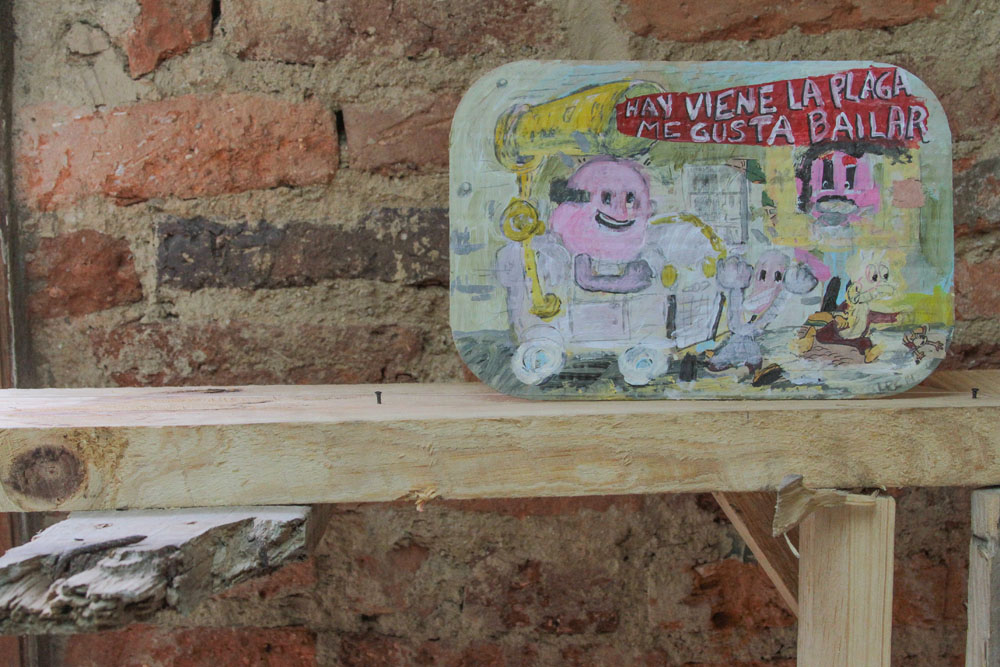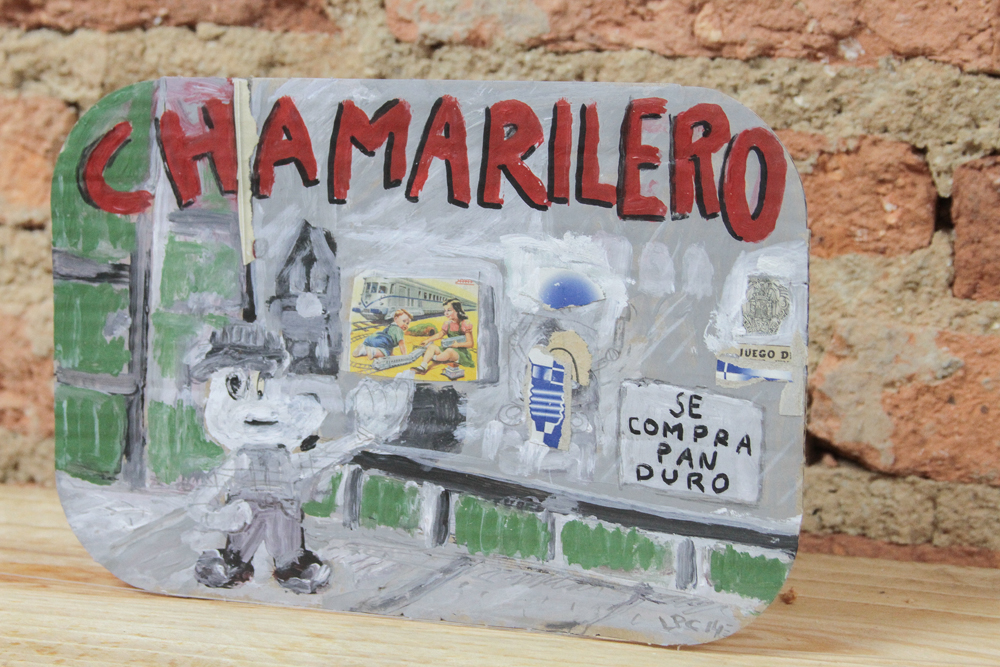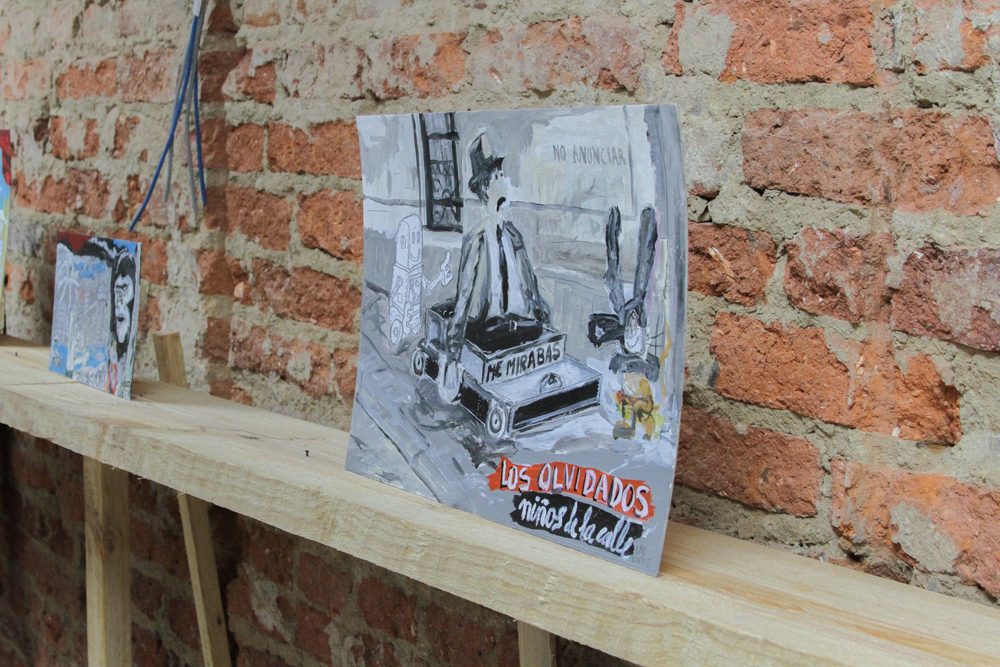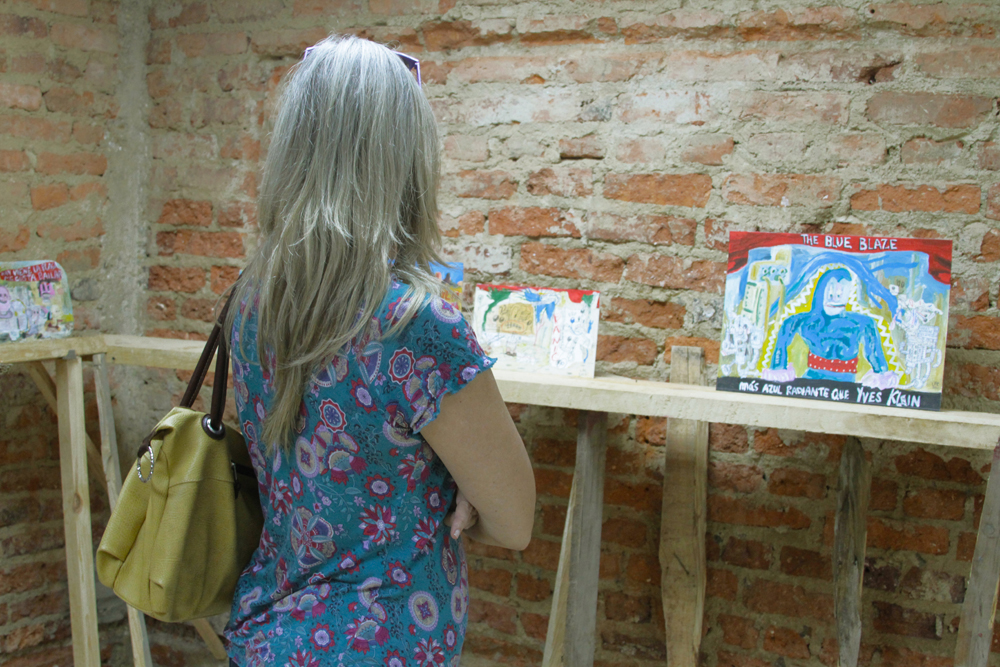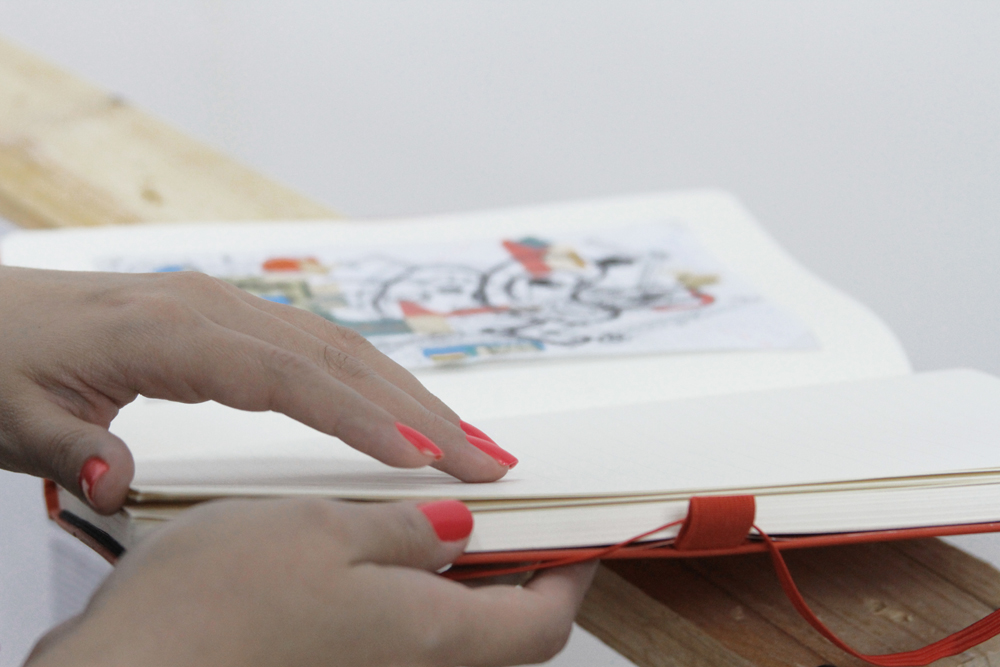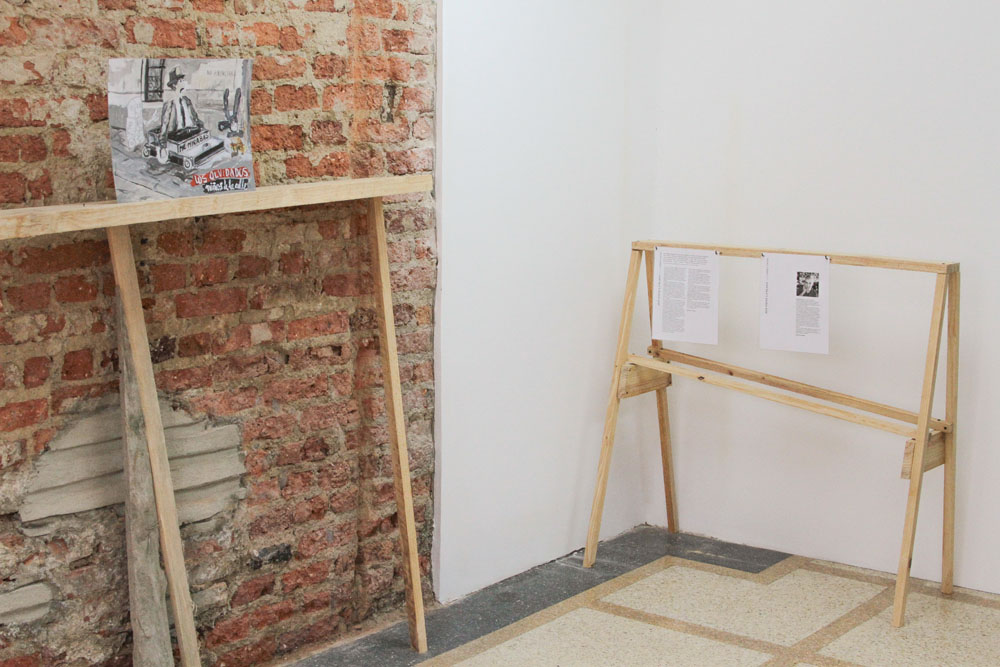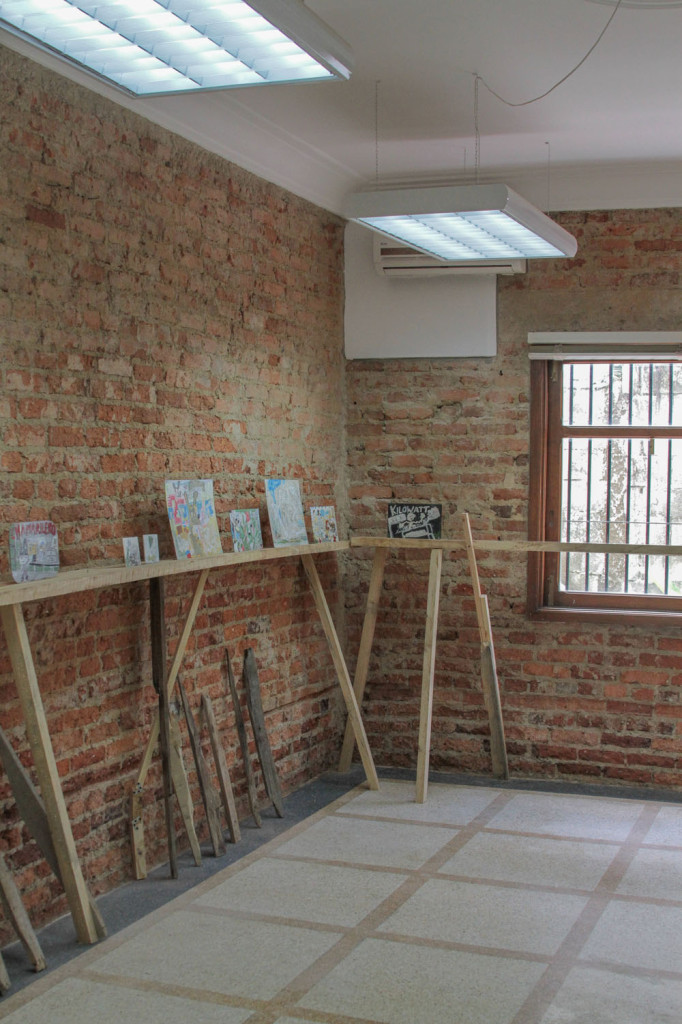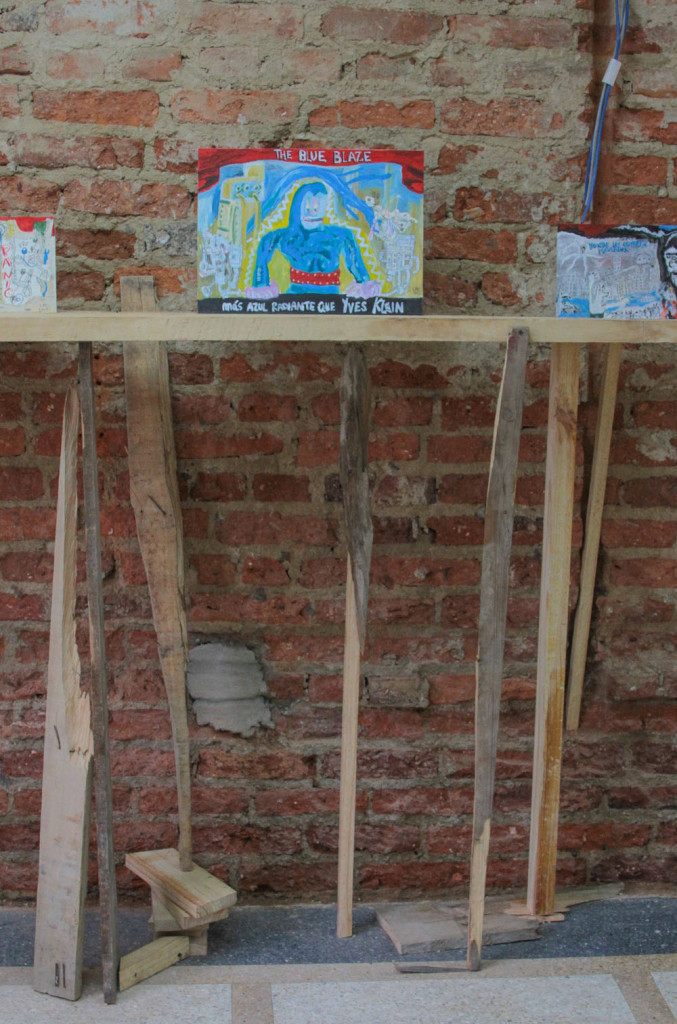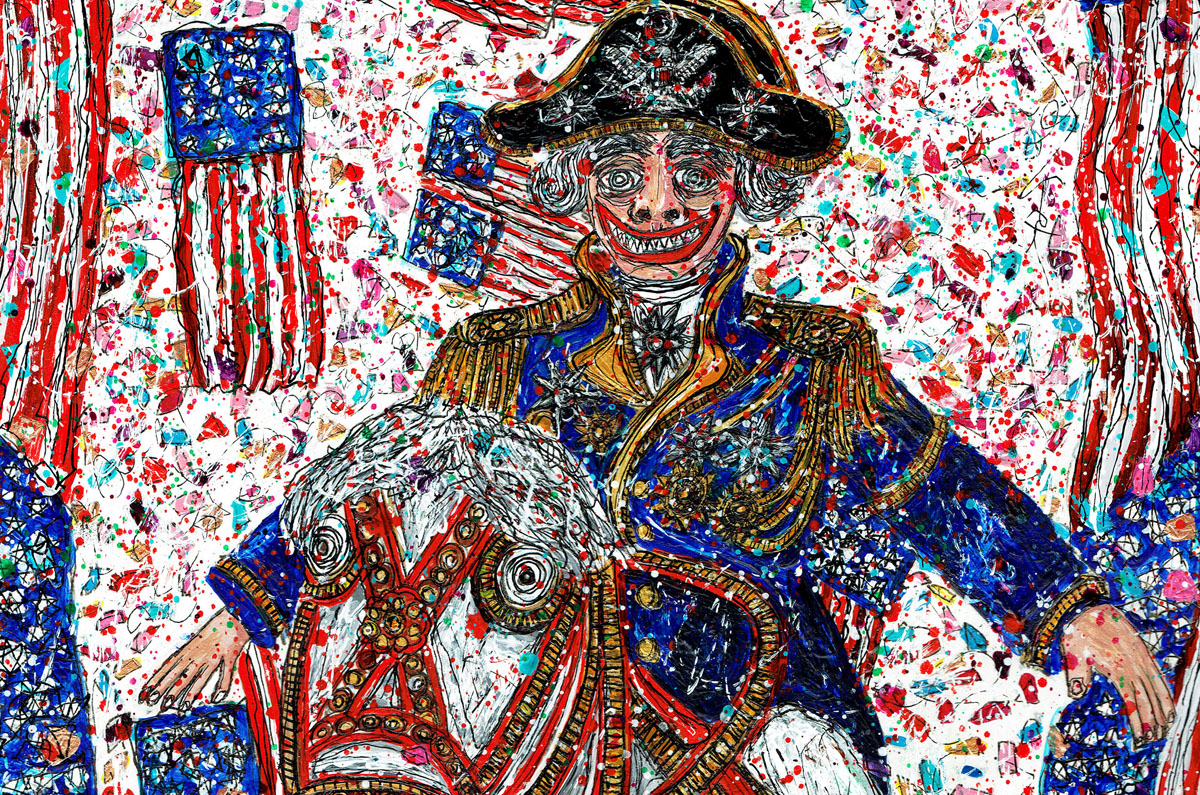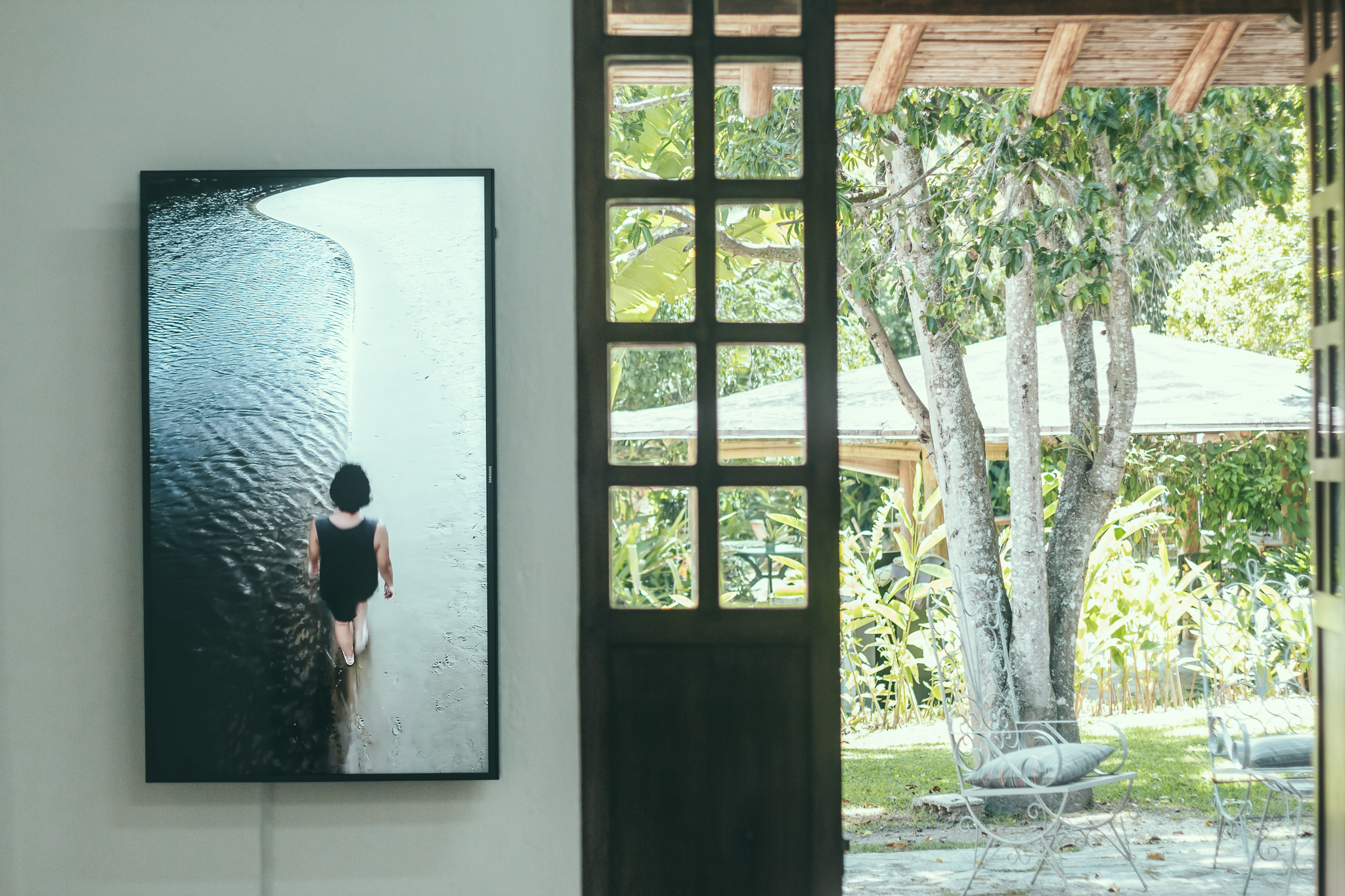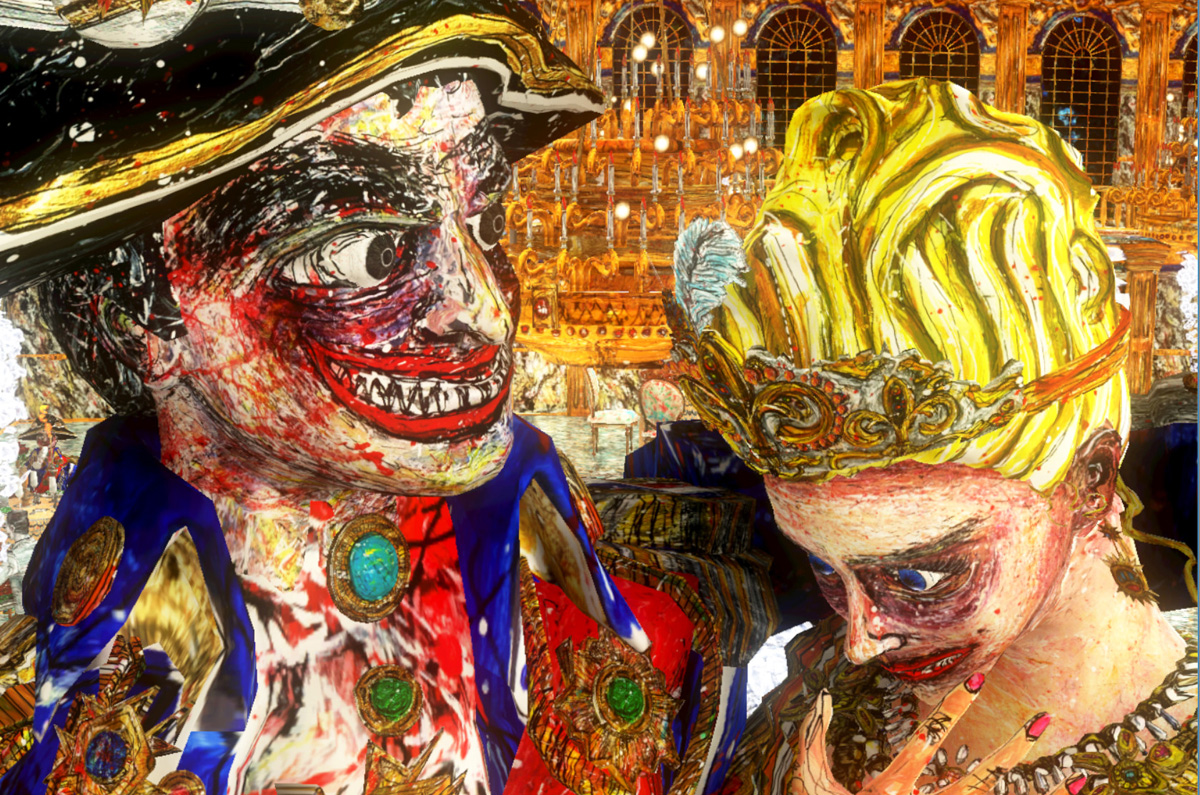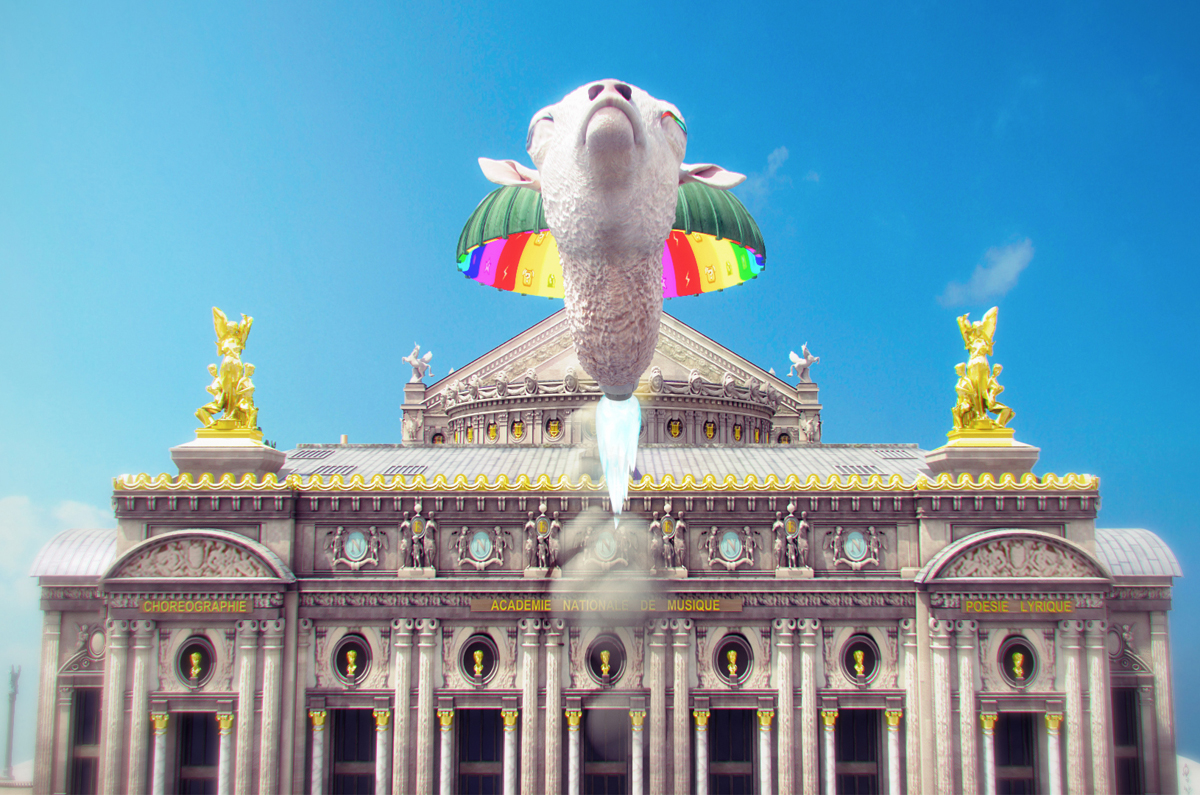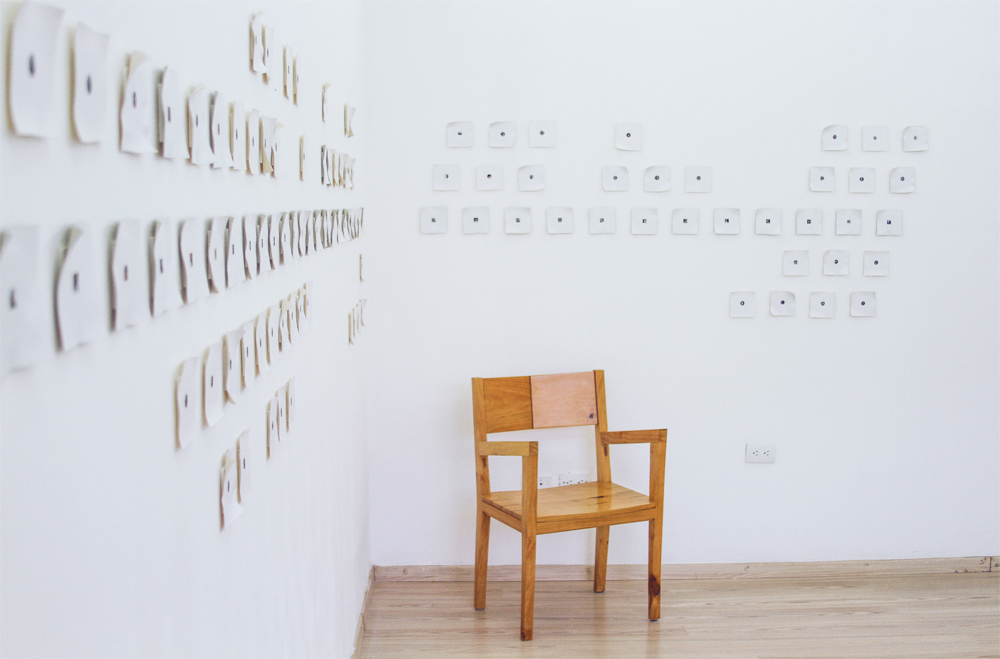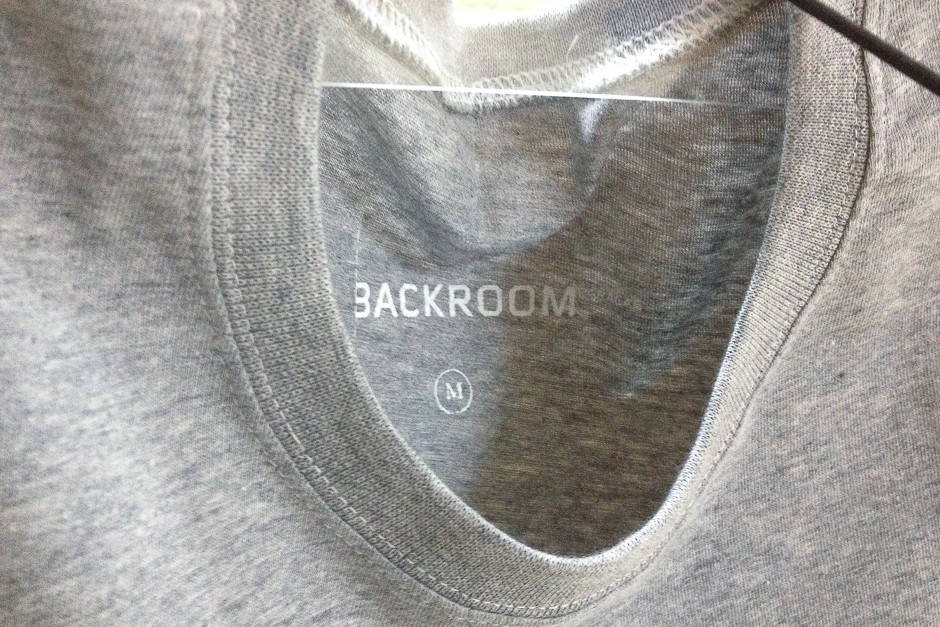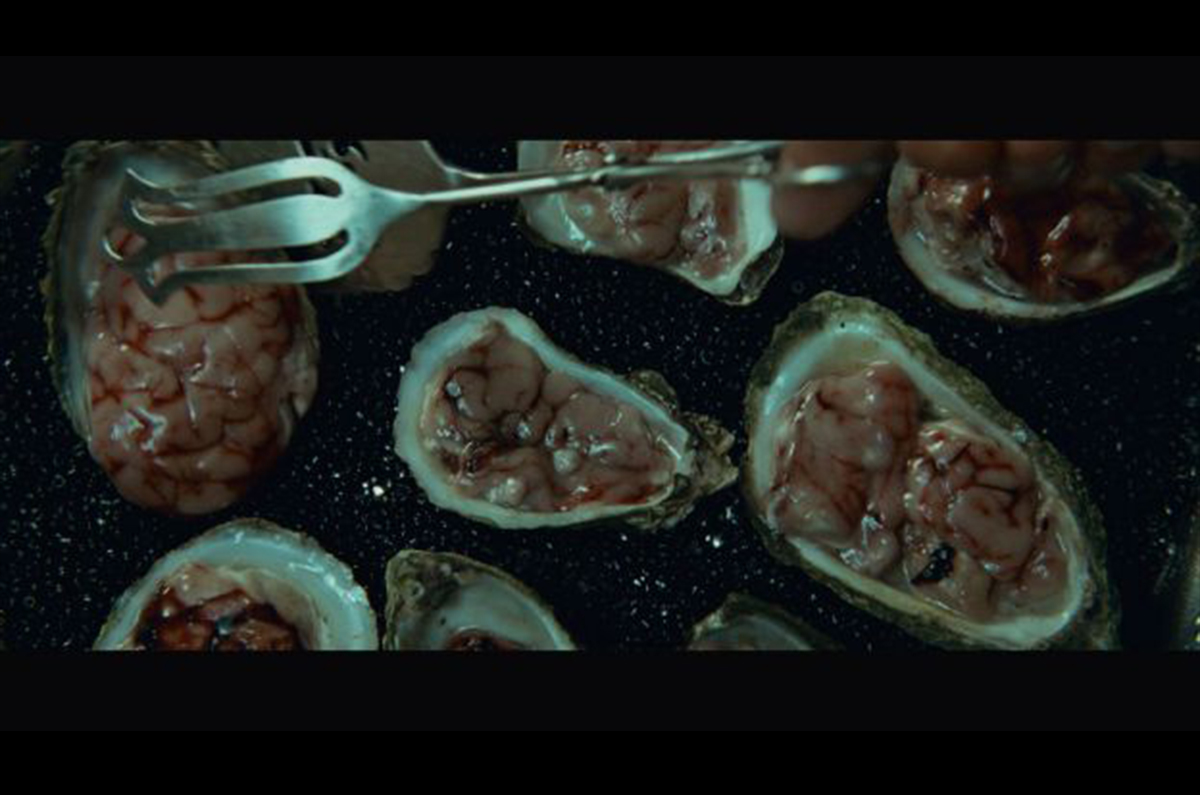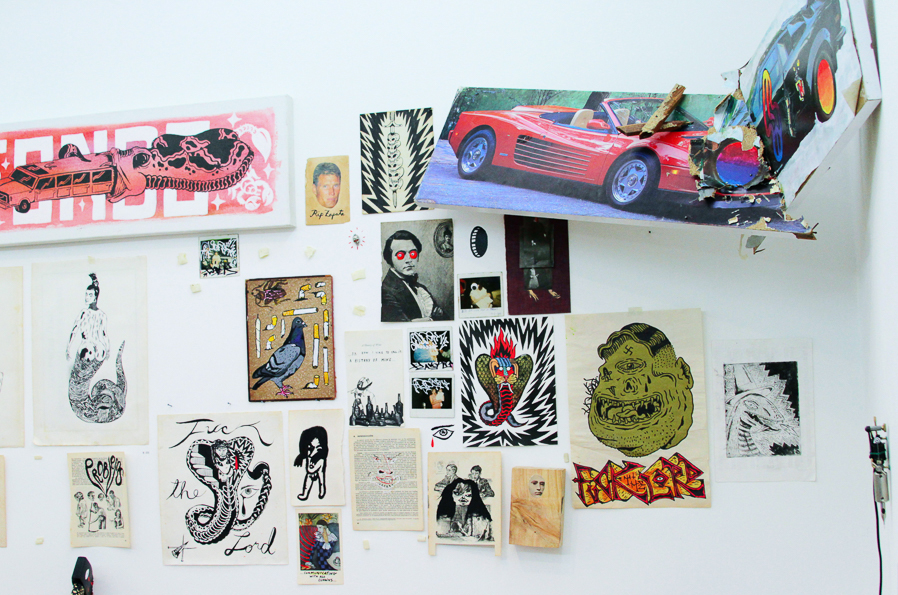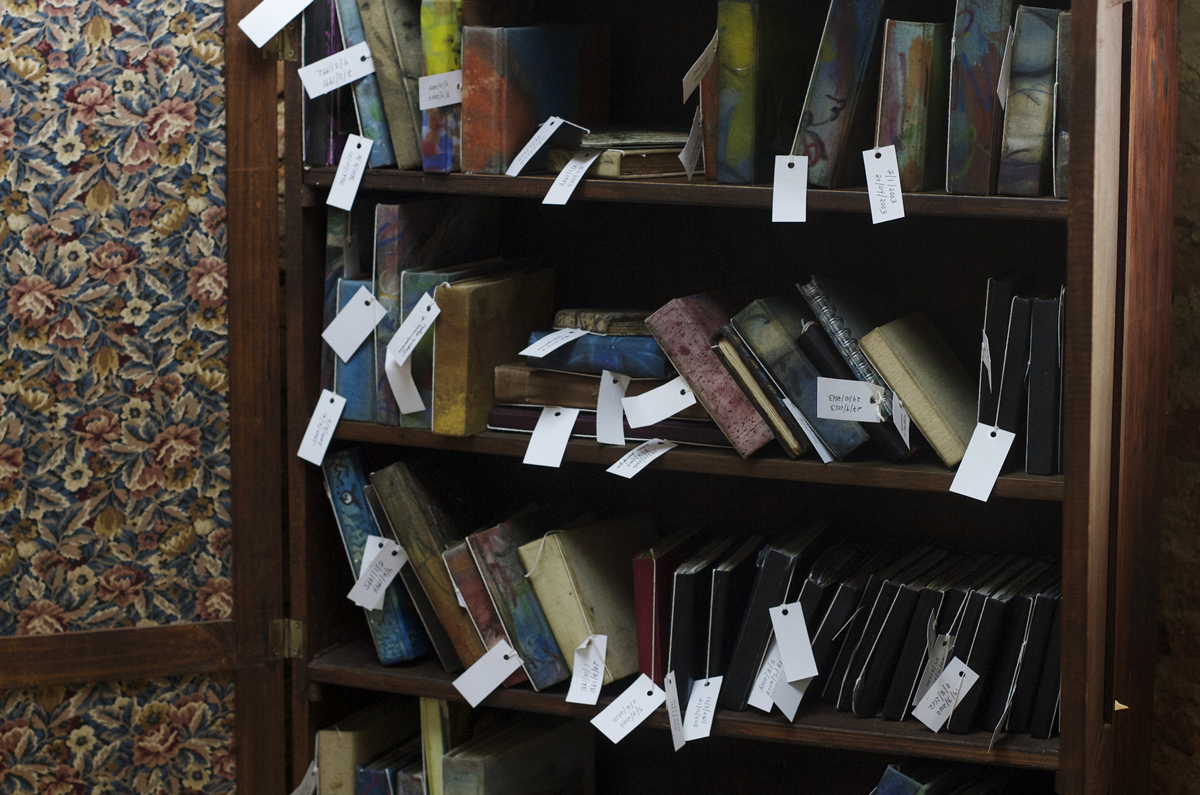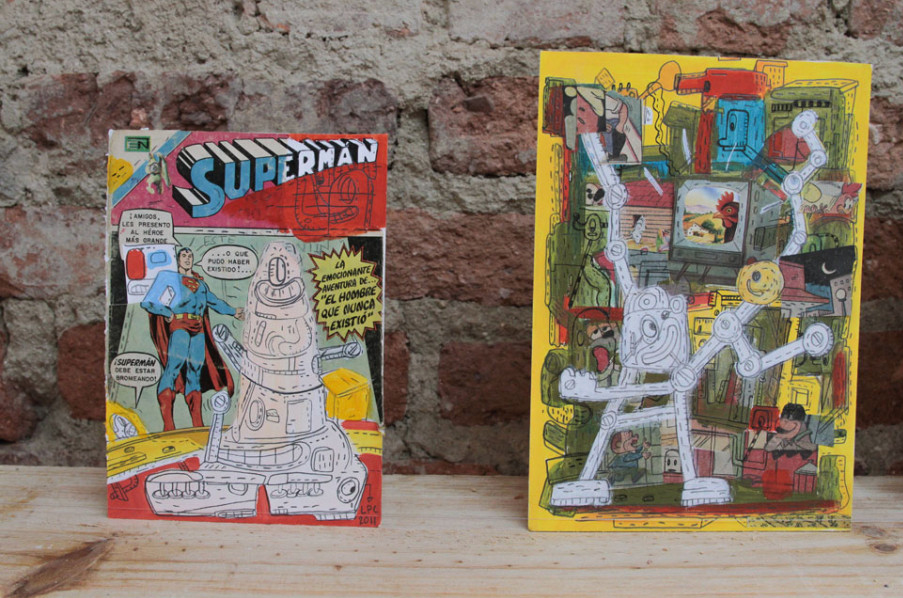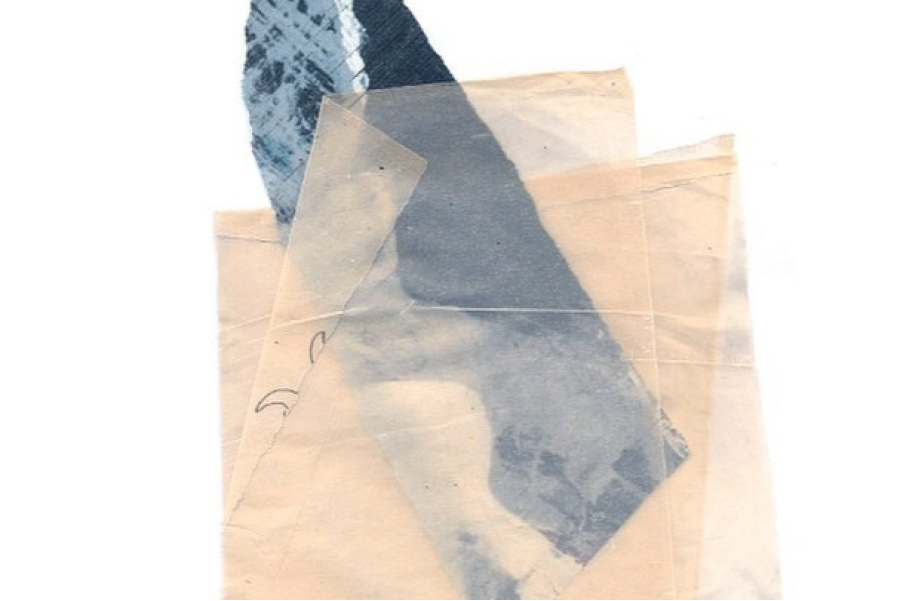Acrobats from Henry Hathaway’s Circus World, the Sea Monster, American singer Frankie Laine, and the destructive insects of Gordon Douglas’s Them! coexist in his drawings with surprising docility. All hand-drawn, of course, with crayons, india ink, and tempera. “And collage, of course”: newspaper clippings, pieces of cookie boxes… because –remember– “it’s always been very primitive, very pop.”
Visual. Design, Graphic Creativity, and Communication Magazine. Number 116, Year XVII. Madrid.
Faced with the challenge of hosting Spanish artist Luis Pérez Calvo at Backroom Caracas, we took to the task of watching Crumb, Terry Zwigoff’s documentary on the icon of underground comics Robert Crumb. It was our way to visit the place of obsession for small narratives, for the story that is fully aware of being fiction and captures what goes unnoticed by the eyes of those of us who are buried under endless urban signs. We did not have the physical or temporal possibility of speaking with Luis, and for that reason, we were also forced to fictionalize him by looking at the referential world of comics. Both Robert Crumb and Luis Pérez Calvo seem engrossed by local stories; this is not just a common visual language based on a peculiar way of drawing, but on an admiration for the most insignificant things, the smallest or perhaps the most vulgar––sometimes even the most perverse––things that go unseen by common urbanites.
But coming in contact with Pérez Calvo’s original art pieces also alleviates the eye that has been flattened by an excess of digital simulacra, because—as Rody Douzoglou has remarked—the materiality of his paintings, so implicated with a tender wink towards precarious and improvised, recycled and reused materials, connects us with the direct manual gesture behind it, even if we do not get to touch it. The grateful eye perceives the relief of «badly» agglutinated paper, or the wrapping of food cans reused as canvas. Luis’s work connects us with this almost forgotten material perception.
If we were to visit his blog, we’d find more stories and marvel (from our convoluted Caracas) at the possibility of living daily life in such an old and archetypical Madrid neighborhood as Lavapiés. In it—with writing aid from his friend Eduardo Bravo—, Luis narrates the small stories that he offers tribute to––as he told us via e-mail–– in his own drawings. The drawings not only tell stories, they have a life that deserves to be told. The piece titled Hay Viene la Plaga. Me Gusta Bailar (a line from the popular 1959 hit song La Plaga by Mexican rock group Los Teen), which gives the exhibition its title, can be traced to the following story in his blog:
Small-town discotheques are worthy of anthropological studies. From the industrial warehouse with uralite ceiling and portable Mahou bars, to the rustic room with wooden beams and dartboard, or the elegant room with armchairs, waiters and dim lights, located at the outskirts of the city, that turns into a brothel right after the DJ is finished. And what about the names? From the comic ones like «Donde siempre» [«As usual»], or the most personalist ones like «O’rencio», not forgetting the more evocative ones likes «Burbujas» [“Bubbles”], or those that recall the former use for the building, like «Ok Corral». But among all small-town nightclubs, the most popular type is the portable disco, ideal for long festivities after the local orchestra (the “Orquesta Caribe,” for instance) finishes its performance and the youngsters want to party on as if there were no tomorrow. Ever attentive to the occurrences of our daily life, Luis Pérez Calvo has made this magnificent drawing to honor all those portable discos that have made us so happy, though some of us may not remember much.
Luis Pérez Calvo (Madrid, 1962) is a painter and illustrator. Born and raised in Madrid, between Valencia Street in the district of Lavapiés and the Portillo de la Glorieta de Embajadores, his childhood was marked by the circus, double features at the cinema, cassettes, vinyl records, Sunday visits to the popular market of El Rastro, local fairs, and comics. If instead of having been born in such a beautiful neighborhood he had entered the world in some other—like Queens, Manhattan, or Brooklyn—, his work would not differ at all from that of many other international artists. However, this small difference made possible for Luis Pérez Calvo to develop a work in which Marvel superheroes share adventures with Pumby and Jaimito, the fantasies of the great Ray Harryhausen mingle with Western-type shots in the desert of Almería, the circus of the Ringling Bros. shares artists with Manolita Chen’s Chinese Theater; snacks are based on churros, chocolate, sarsaparilla, pretzels, and bagels; rollercoasters are as exciting as bumper cars, and forum streets are crowded with robots, androids, and giant octopuses. The work of Luis Pérez Calvo has been published in magazines of the stature of Nosotros somos los muertos (NSLM), La Cruda, Visual, Trauma, and ¡Qué suerte! He is currently represented by Galería Liebre in Madrid.
THIS MIGHT INTEREST YOU
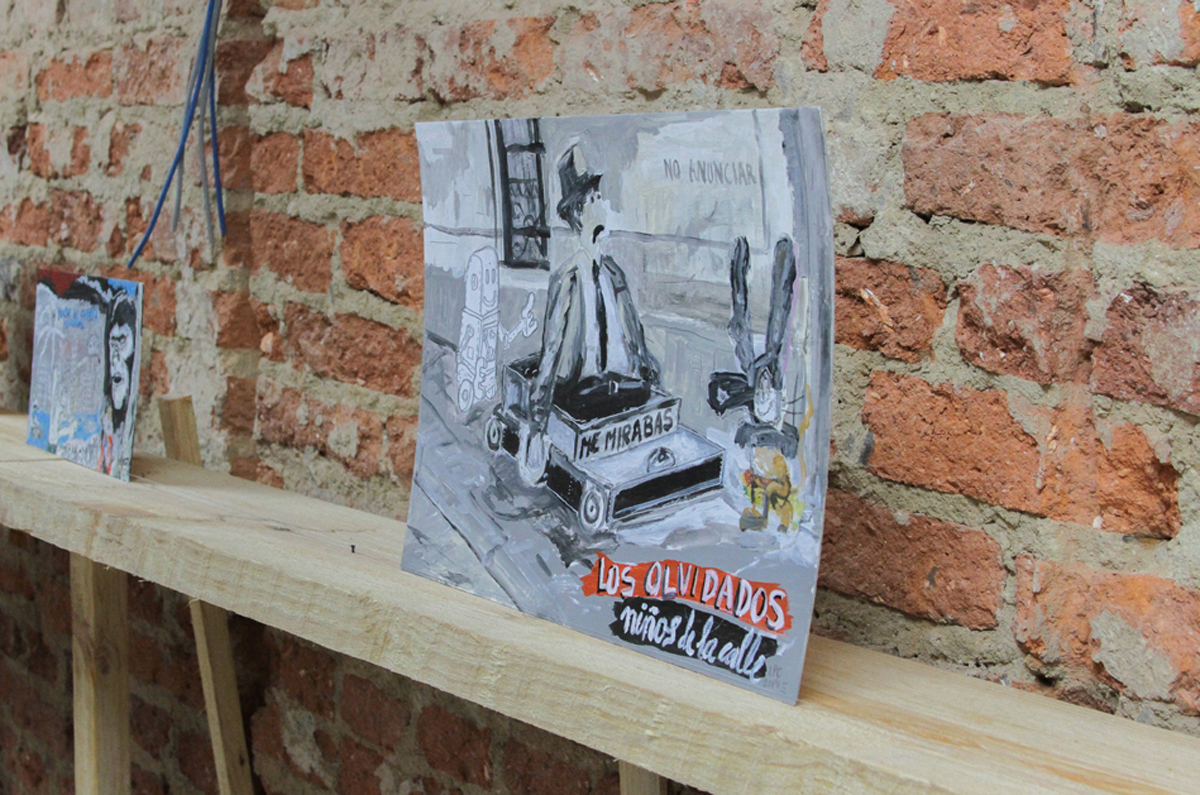
Anatomy of a Scene: The Forgotten Children of the Streets, by Luis Pérez Calvo.






